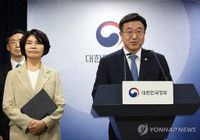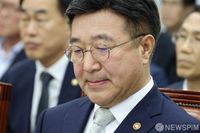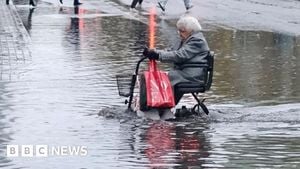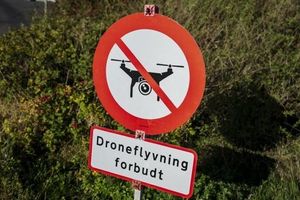On September 10, 2025, the South Korean National Assembly’s Interior and Safety Committee convened in Seoul to address the aftermath of one of the nation’s most devastating recent disasters: the Osong underpass tragedy in Cheongbuk Cheongju. The session, attended by Minister of the Interior and Safety Yoon Ho-jung and a host of government and local officials, marked a critical juncture in the ongoing investigation into the disaster’s causes, the government’s response, and the pursuit of accountability and reform.
The Osong underpass disaster struck on July 15, 2023, when torrential rains—over 500 millimeters in a single day—triggered catastrophic flooding and landslides across the region. According to PoliNews, the deluge inundated the underpass, trapping 17 vehicles and resulting in 14 confirmed deaths, with three people still missing. The scale of the tragedy shocked the nation and immediately raised questions about disaster preparedness, emergency communication, and the responsibilities of both local and national authorities.
Minister Yoon Ho-jung, in his report to the committee, laid out the government’s timeline of actions and the next steps. “A joint public-private investigation into the disaster’s cause will be conducted until February next year, and an improvement plan will be prepared,” Yoon stated, as reported by Chungcheong Times. He detailed the immediate response after the incident: “After being notified by the National Fire Agency, we requested local governments and related agencies to manage the situation, issued an emergency alert in accordance with the activation of emergency response level two, and convened five review meetings, including those chaired by the Prime Minister and the President.”
Yoon emphasized that the government’s approach was multifaceted, involving coordination across ministries and local authorities. “We organized a task force to review both the cause and compensation plans,” he said, noting that the investigation encompassed not only the disaster’s origins but also the assessment of damage to residents and infrastructure. The task force, according to PoliNews, comprises around 50 officials from ministries, local governments, law enforcement, and construction companies, all working toward a transparent and thorough accounting of the events leading up to the tragedy.
The government’s own report, submitted to the National Assembly, identified several critical failures as root causes. As PoliNews detailed, the disaster was attributed to “unauthorized demolition of embankments, shoddy temporary embankment construction, and a lack of supervision.” These findings underscored the importance of proper oversight and the dire consequences when safety measures are neglected.
In the months following the disaster, the government has sought to address the needs of victims and their families. Yoon explained, “At the request of bereaved families during a national listening session presided over by President Lee Jae-myung in July, we established the July 15 Osong Underpass Disaster Victim Support Team.” He pledged ongoing efforts to meet the families’ demands, saying, “We will continue to strive to implement requests such as psychological support and memorial projects.”
The committee meeting was not without controversy. Lawmakers from across the political spectrum pressed for clarity on the roles and responsibilities of key officials. Democratic Party members, as reported by PoliNews, directed sharp criticism at Kim Young-hwan, the governor of North Chungcheong Province, questioning the prosecutorial decision not to indict him and suggesting the investigation was insufficient. “This is a social disaster where 14 of our citizens lost their lives,” said lawmaker Lee Yeon-hee, who argued that “there were several decisive moments when the disaster could have been prevented, but the province ignored them all.”
Lee cited multiple warnings from the Geumgang Flood Control Office, which requested North Chungcheong Province register for flood alert messages three times prior to the disaster—requests that were not acted upon. “Ultimately, five critical warnings, including an alert that the planned flood level had been exceeded, were not received by the province,” Lee said. Furthermore, on the morning of the disaster, the Multifunctional Administrative City Construction Agency made four urgent calls requesting evacuation and traffic control, but these were allegedly ignored as well.
Adding to the scrutiny, Democratic Party lawmaker Yoon Kun-young revealed that the provincial government sought legal advice the day after the disaster, while search efforts for missing persons were still underway. “It’s shocking that North Chungcheong Province focused on legal defenses rather than on searching for the missing and supporting the bereaved families,” Yoon remarked, criticizing what he described as an attempt to evade responsibility.
Governor Kim Young-hwan, for his part, pushed back strongly against the accusations, asserting, “The Osong disaster was caused by the collapse of the temporary embankment at the Miho Stream Bridge and is unrelated to underpass management.” He further declared, “I have never seen a parliamentary investigation aimed at indicting a single person. If you want to indict me, do so. I will accept it. This is not an investigation but political oppression.”
Despite the heated exchanges, Minister Yoon sought to keep the focus on systematic reform and victim support. “After the disaster, we developed a climate crisis disaster response innovation plan in cooperation with related ministries, and we are operating a task force to improve underpass management systems,” he explained. The government’s measures include expanding entry-blocking facilities, introducing new management responsibilities, and providing support for flood prevention infrastructure. “We are committed to transparent investigation and effective management, free from political influence,” Yoon stated, as reported by Chungcheong Times.
Looking ahead, the government has outlined a clear timeline for action. By February 2026, the joint public-private investigation will conclude, and a comprehensive set of reforms and compensation plans will be presented. Minister Yoon indicated that a series of meetings with victim representatives and related parties would be held to finalize the findings and ensure that the voices of those most affected are heard.
The Osong underpass tragedy has become a stark reminder of the dangers posed by extreme weather events—dangers that are only likely to intensify in an era of climate change. It has also exposed gaps in communication, infrastructure, and accountability that South Korea’s government now pledges to address. As the investigation and reform process continues, the nation will be watching closely, hoping that the lessons of July 2023 lead to lasting change and greater safety for all.





